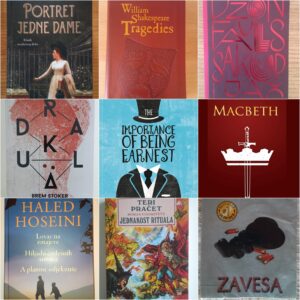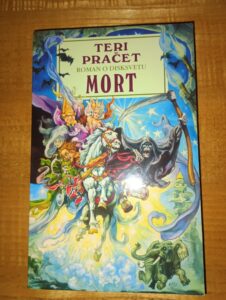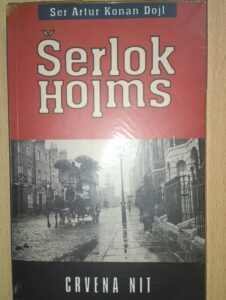The Master and Margarita (1940)

…………………………………………………
The Master and Margarita Book Review
The Master and Margarita is a 1940 novel by Russian author Mikhail Bulgakov. It is an uneven, but highly unique genre-bending experiment.
………………………………………………….
“Everything will turn out right.
The world is built on that“
…………………………………………………..
…………………………………………………..
Written in the Soviet Union between 1928 and 1940, this novel was finished just before Bulgakov’s death, but it was only released fully two and a half decades afterward. It is obvious why they waited this long as the book is controversial and very blunt in its themes and provocative in its imagery, which are all the reasons why it has stood the test of time and is still enjoyed by modern readers. It is most certainly one of the most authentic and tonally diverse novels ever written.
The story is very difficult to encapsulate properly, so I will not even embark on such a foolish quest. Following the arrival of the devil in atheistic Soviet Union, the novel is fantastical in nature, which was a true rarity back when it was written, but it is also a comedy (in particular a satire), a romantic tragedy, a historical drama and a supernatural as well as a farcical tale.
Yes, this book is all of those things. You can even add more labels and genres to it and they would all act as reasonable summaries, but in reality it remains an almost impossible to categorize story and all for the better. It would be a much more interesting world if we had more of these complex and diverse stories. It is so all-encompassing, in fact, that it represents life itself – beautifully and frustratingly chaotic at the same time.
Although containing so many fantastical elements, it is in the comedy department where the novel shines the most. The author cleverly satirizes so many aspects of Soviet life during this period, in particular focusing on their atheistic beliefs, which are gloriously lampooned in the first couple of chapters in particular. The first half of the book is frequently very funny with the second half shifting to a more dramatic tone.
…………………………………………………..
…………………………………………………..
As somebody living in a Slavic country, I found the humor here pleasantly familiar and stupendous. There are so many lines of dialogue here that are witty, sophisticated and sometimes even genuinely hilarious. The absurdist touches were excellent while the black humor was present throughout and equally as effective, though I did find the author’s straightforward, almost emotionless depiction of the deaths somewhat problematic.
The book is heavy with allusions, symbolisms and metaphors. As somebody who isn’t particularly well versed in Soviet history, many of these details went over my head. That is an issue for certain, but the story is so strong that it still manages to make an impact for those who are patient to stick with it until the very end.
Thematically speaking, it’s a rich novel that explores not just the ambiguity between good and evil, redemption, unreliable narration and most effectively the relationship between passion and love. Both are necessary for humans to live a fulfilled life as without one or the other, they will be unhappy. Bulgakov was so progressive in that regard that some of the most sensual and provocative passages obviously had to be edited out in the first couple of publications by the censors.
The character development in The Master and Margarita is solid, albeit not wholly great. The titular characters share such a beautiful, tragic romance. Though the former is not as well developed, the latter is such an interesting witch character and by far the best female character in the story. She is energetic, charismatic and a lot of fun. Bezdomny is an important character who seemed like a protagonist at first, but the book definitely has no genuine protagonist in the more basic concept.
Woland and his entourage are an eclectic bunch. The devil, the magician, the cat etc. They are a crazy group with the cat being the most memorable member. I liked these personalities, but the novel admittedly wasn’t as effective in the supernatural and farcical elements with some of the sections focusing on this troupe coming across as an unnecessary detour.
…………………………………………………..
…………………………………………………..
And then we have the characters in the novel that the Master is writing. These passages focus on Pontius Pilate, Jesus and Judas. They were so provocatively imagined that they ended up angering both atheists and Christians. While these parts were the sparsest, they were effective, engaging and fueled by excellent dialogue.
The Master and Margarita definitely has a pacing issue. So many parts here dragged, especially in the middle of the story. Some characters were much more interesting than others and the same goes for the different genres, all varying in their effectiveness. But the originality of this story needs to be respected. Bulgakov’s writing is particularly strong in dialogue, though he failed to properly connect and explain all characters and their motivations. There were so many characters here that some got lost in the shuffle. The novel is also difficult to follow at times due to hectic pacing and an overstuffed narrative while tonally it’s a mess, but an intriguing one regardless.










